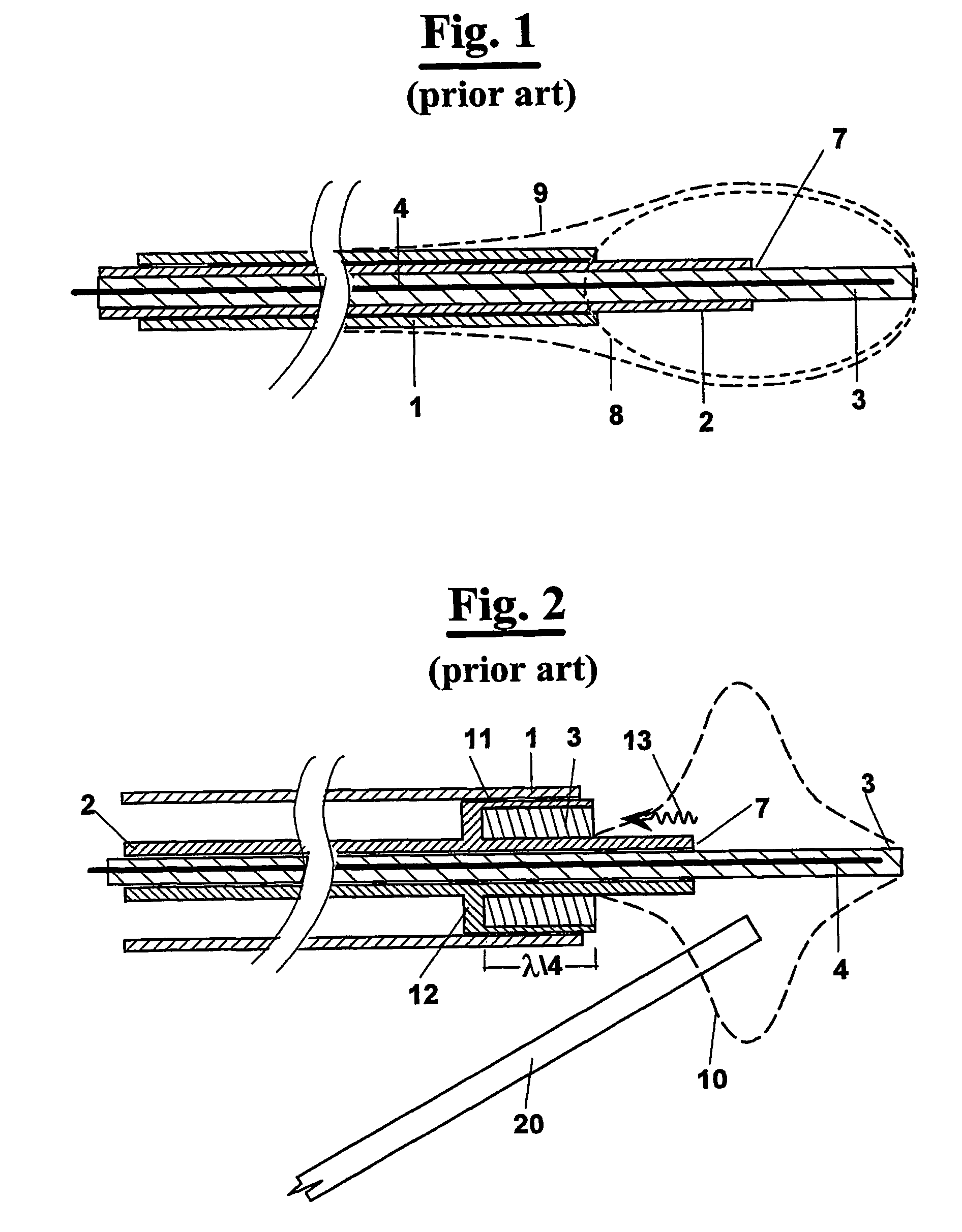Interstitial microwave antenna with miniaturized choke hyperthermia in medicine and surgery
a microwave antenna and miniaturized choke technology, applied in the field of interstitial microwave antenna with miniaturized choke hyperthermia in medicine and surgery, can solve the problems of large limit to the use of this technique, the impedance of the antenna never perfectly adapts to the medium in which it operates, and the suitably concentrating heat production near the active portion of the antenna
- Summary
- Abstract
- Description
- Claims
- Application Information
AI Technical Summary
Benefits of technology
Problems solved by technology
Method used
Image
Examples
Embodiment Construction
[0053] In FIG. 3 an axial cross section is shown of an antenna according to the invention inserted in a metal tube that consists in an biopsy needle 1, for example a 14 Gauge, outer diameter=mm 2.1 needle.
[0054] The antenna, in its active portion at the right of the figure, is a radiating dipole or monopole. More precisely, the antenna is formed by a co-axial tube having an external conductor 2, by a dielectric layer 3 and by a centersl conductor 4 immersed in the dielectric layer 3 that the insulates from the external conductor 2. The external conductor 2, as well known, end point indicated with 7, which is the feeding point the active portion of the antenna, said feed in gergo tecnico, where the emitted power, normally, is maximum.
[0055] According to the invention, is provided a plastics sheath insulating 5 and a collar metal 6. More precisely, this result can be obtained:
[0056] saldando on the external conductor of the antenna 2 the metal collar 6 in a predetermined position,
[005...
PUM
 Login to View More
Login to View More Abstract
Description
Claims
Application Information
 Login to View More
Login to View More - R&D
- Intellectual Property
- Life Sciences
- Materials
- Tech Scout
- Unparalleled Data Quality
- Higher Quality Content
- 60% Fewer Hallucinations
Browse by: Latest US Patents, China's latest patents, Technical Efficacy Thesaurus, Application Domain, Technology Topic, Popular Technical Reports.
© 2025 PatSnap. All rights reserved.Legal|Privacy policy|Modern Slavery Act Transparency Statement|Sitemap|About US| Contact US: help@patsnap.com



